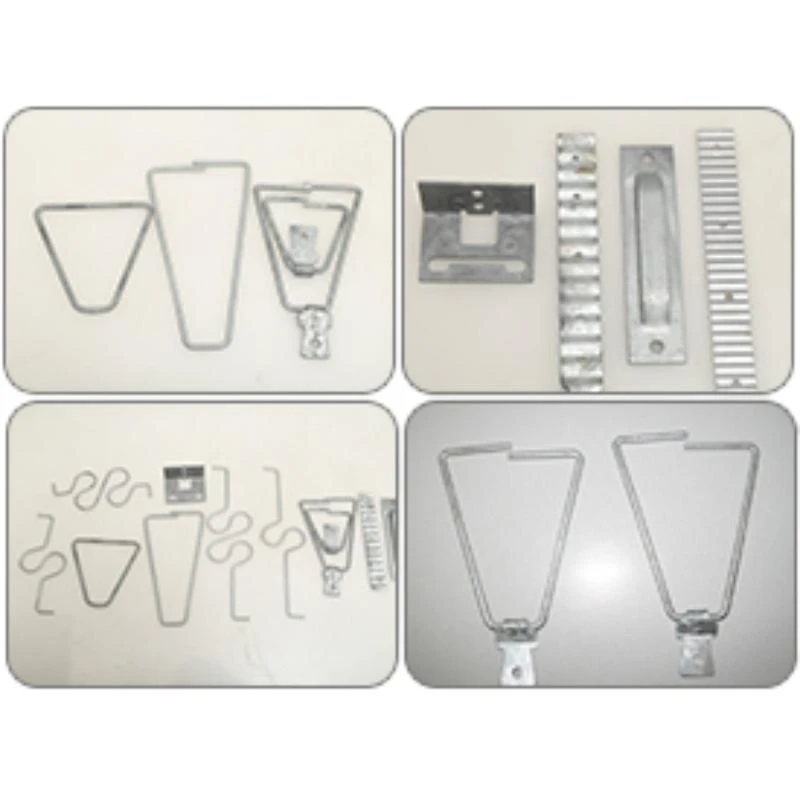
- Mobile Phone
- +8613931874955
- sales@cntcmetal.com
Exploring the Strength and Versatility of Iron and Wire in Modern Applications
The Strength and Versatility of Iron & Wire
Iron and wire may seem like simple materials, but they possess a remarkable strength and versatility that have made them integral to countless applications throughout history. From construction to artistic expression, the use of iron and wire has evolved, showcasing the ingenuity of human craftsmanship and engineering.
At its core, iron is one of the most abundant elements on Earth, found naturally in numerous minerals. Its extraction and utilization date back thousands of years, giving rise to various tools and structures that have shaped civilizations. Iron's remarkable ductility allows it to be drawn into wires without breaking, making it a favored material for countless purposes. When transformed into wire, iron’s properties adapt, providing both flexibility and resilience.
Historical Significance
The use of iron wire can be traced back to ancient civilizations. Early artisans created iron wire for decorative and functional purposes, such as for jewelry, tools, and even the reinforcement of structural elements. In medieval Europe, blacksmiths mastered the art of wire drawing, creating intricate designs that adorned everything from gates and railings to candleholders. The introduction of wrought iron further enhanced these capabilities, as artisans were able to create even more delicate and intricate pieces.
During the Industrial Revolution, the demand for iron wire skyrocketed due to the rapid growth of infrastructure. Iron wire played a crucial role in building railways, bridges, and telegraph systems, connecting regions and facilitating communication. Its strength made it invaluable in construction, and innovative techniques such as wire rope emerged, allowing for the creation of suspension bridges and lifting mechanisms. Iconic structures like the Brooklyn Bridge owe much of their stability and safety to the strategic use of iron wire.
Modern Applications
iron & wire

In contemporary times, iron wire continues to be a staple in various industries. One of its primary applications is in construction, where it is used to reinforce concrete, providing tensile strength to withstand immense pressures. Construction grade wire is often found in the form of rebar, ensuring that modern buildings, bridges, and roads can endure the test of time.
In addition to construction, iron wire finds its way into everyday life. It is used in the manufacturing of fences, agricultural products, and various tools, making it indispensable in numerous trades. Moreover, the rise of sustainable practices has seen an uptick in the use of recycled iron wire, aligning with the growing emphasis on eco-friendly materials and processes.
Artistic Endeavors
Beyond its utilitarian purposes, iron wire has also become a medium for artistic expression. Artists and sculptors utilize iron wire to create intricate sculptures and installations, showcasing both its aesthetic appeal and the skill involved in manipulating this material. Wire sculptures can be found in galleries and public spaces, serving as a testament to the creative potential of iron.
Conclusion
The journey of iron and wire is a reflection of human advancement and creativity. From its historical roots to its modern applications and artistic uses, iron wire remains a fundamental element in our lives. Its strength and versatility ensure that it will continue to play a vital role in shaping our world, proving that even the simplest materials can have a profound impact. In an era of innovation and sustainability, iron and wire are likely to maintain their significance, reminding us of the enduring strength and beauty that can be found in the most unassuming materials.
share:
-
Why Sacrificial Formwork Is Redefining Underground ConstructionNewsJun.06,2025
-
The Structural Dynamics of Modern Concrete: How Snake Spacers Revolutionize Flexible ReinforcementNewsJun.06,2025
-
Snake Spacers Smart-Lock Concrete Reinforcement with Surgical PrecisionNewsJun.06,2025
-
Snake Spacers: Reinforcement Precision for Modern Concrete ProjectsNewsJun.06,2025
-
Snake Spacers Powering Concrete's Structural DNANewsJun.06,2025
-
Slither into Success: Snake Spacers' Precision Bite for Unbreakable ReinforcementNewsJun.06,2025
-
Sacrificial Formwork: Building Stronger, Faster, and Safer StructuresNewsJun.06,2025



















